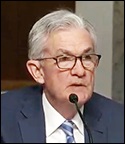By Pam Martens and Russ Martens: January 19, 2022 ~
There are numerous reasons that members of Congress, bank regulators, and mainstream media don’t want to talk about the repo blowup in 2019 and the massive Fed bailout that followed. Economist Michael Hudson previously explained how the Fed lacked authority to bail out a handful of trading houses on Wall Street under the dictates of the Dodd-Frank financial reform legislation. Dodd-Frank restricted the Fed to using its emergency lending powers to rescue a “broad base” of the U.S. financial system.
As we detailed on Monday, there was no “broad base” of the U.S. financial system being bailed out by the Fed in the last quarter of 2019: 62 percent of a cumulative $19.87 trillion in rolled-over repo loans went to just six trading houses: Nomura Securities International ($3.7 trillion); J.P. Morgan Securities ($2.59 trillion); Goldman Sachs ($1.67 trillion); Barclays Capital ($1.48 trillion); Citigroup Global Markets ($1.43 trillion); and Deutsche Bank Securities ($1.39 trillion).
Notice that three of the firms listed above are affiliates of foreign banks (Nomura, Japan; Barclays, UK; Deutsche Bank, Germany.) Now imagine the embarrassment to the Fed if it was forced to admit that it had to secretly bail out the affiliates of foreign banks for the second time in 11 years because the derivatives of U.S. banks were still not adequately regulated, after derivatives had played a central role in the worst financial crash in 2008 since the Great Depression.
All six of the Wall Street trading houses listed above have one thing in common: large derivative exposure. Consider the revelations in the Consolidated Statement of Financial Condition for Nomura Securities International for the period ending March 31, 2019. (As indicated above, Nomura Securities International received the largest cumulative total of repo loans from the Fed in the fourth quarter of 2019.)
The financial statement shows that Nomura Securities International had total assets of $127.5 billion but potential derivative exposure as follows: (See pages 30 and 41.) A “Maximum Payout” on protection sold on credit derivatives of $14 billion; and a “Maximum Payout” on “derivative contracts that could meet the definition of a guarantee” of $97.7 billion.
But here’s the really scary part of Nomura’s pile of derivatives: the name Nomura does not appear once in the report on derivatives that might pose a threat to the U.S. financial system that is published quarterly by the Office of the Comptroller of the Currency (OCC). It didn’t appear in any 2019 report and it still hasn’t appeared there. We asked the OCC about that yesterday and their response was that they don’t comment on individual institutions.
Three of the largest holders of derivatives in the U.S. that do appear on the OCC’s quarterly report just happen to be the trading affiliates of the same three firms that were among the largest six borrowers in the Fed’s repo loan facility in the fourth quarter of 2019: JPMorgan Chase, Citigroup and Goldman Sachs.
If Nomura was a derivatives counterparty to these firms and it found itself on the wrong side of a credit derivative trade, such as the blowup of Thomas Cook one day before the Fed launched its repo bailout, its credit rating could have been in severe jeopardy if this fact became public. A credit ratings downgrade would have likely meant that Nomura would have had to post large sums of additional collateral with its derivatives counterparties. And Nomura was not exactly in an ideal financial position in the fall of 2019.
In April of 2019 the parent company, Nomura Holdings, announced it would need to cut $1 billion in costs and close more than 30 of its 156 retail branches in Japan. It had just suffered its first full-year loss in a decade.
Less than three months after Nomura Securities International had begun to take giant secret loans from the Fed’s repo facility, Nomura Holdings announced that it had named a new CEO, Kentaro Okuda, who was quoted in the Financial Times as taking charge with a “sense of crisis.”
There is a strong stench of the Lehman Brothers and AIG derivatives fiascos of 2008 swirling around the news blackout of the Fed’s secret bailouts of 2019.
According to documents released by the Financial Crisis Inquiry Commission (FCIC), at the time of Lehman Brothers’ bankruptcy on September 15, 2008 it had more than 900,000 derivative contracts outstanding and had used the largest banks on Wall Street as its counterparties to many of these trades. The FCIC data shows that Lehman had more than 53,000 derivative contracts with JPMorgan Chase; more than 40,000 with Morgan Stanley; over 24,000 with Citigroup’s Citibank; over 23,000 with Bank of America; and almost 19,000 with Goldman Sachs.
The U.S. government had to take over the giant insurer, AIG, because it was counterparty to tens of billions of dollars in derivatives to Wall Street banks and had no money to pay them. This is a chart that AIG was eventually forced to release. It documents that more than half of its bailout money came in its front door and then was quietly funneled out the backdoor to pay off Wall Street and foreign trading houses. Five of the Gang of Six that were feeding at the Fed’s repo trough in the last quarter of 2019 appear on this chart: Goldman Sachs, Deutsche Bank, JPMorgan, Citigroup, and Barclays.
It’s long past the time for the Fed to come clean on exactly what happened in the fall of 2019 that caused it to launch its repo bailout facility. Americans will simply never trust the Fed if it doesn’t.


